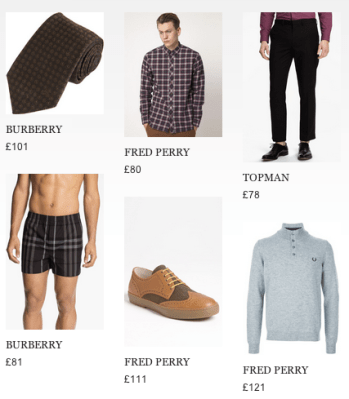The whole fashion-meets-tech play is really only still emerging, with a wide gamut of businesses pimping various ideas from matching your personal tastes in clothes via your social graph, to literally mapping your body to fit custom-made items. But Fashion startups are notoriously guarded with their numbers.
However, one startup has decided to break the mold. Lyst, which is a little like a Twitter for fashion which you can also buy from, has been around for about 18 months until it launched late last year. It has since picked up $5 million in funding and appears to be doing pretty well. CEO and co-founder Chris Morton revealed to us that, while their 1-million-plus monthly unique visitors may ‘look’ puny, it’s the $1 million-plus in sales every month that is making investors and customers happy. Both those numbers represent 100 percent growth in 2012. Right now it’s getting 60% traffic from the US, 30% from Europe and 10% Asia + Aus.
Just as Pinterest is dominating the social content space (alongside Tumblr), Lyst is trying to own ‘social commerce’ for fashion. And there is evidence it is doing this: Both Gucci and Alexander McQueen each have almost 10x more followers on Lyst than on TheFancy, which is backed by both Gucci and McQueen’s parent company, PPR.
Not unlike Twitter, on Lyst you can follow fashion brands, stores and influencers, so that as soon as an item is added you’ll see it. That means even items that are not available in your home country, such as from a Gucci store in Italy. This gives Lyst more data than could be pulled from someone using a bookmarklet to create some kind of list.
Social commerce has gotten a bad name recently, perhaps because it simply hasn’t lived up to expectations. Retailers put a lot of store into Facebook pages and people didn’t see the uplift. And despite Fab doing well at socialising home decor, it still feels the need to go out and raise continually large funding rounds.
TheFancy is raved about a lot in the US, but is mostly content ‘branded’ as commerce. And only a small portion of items are actually buy-able. On Lyst, says Morton, you can buy everything you ‘pin’ or follow. Unlike pins of images and Facebook Likes, this means sales, not just “engagement.” It’s a model also followed by the likes of Fashionfreax.
Lyst recently opened a new office in NYC but remains wedded to its Shoreditch, London, office, seeing a better way of operating than in the Valley, given the industry it’s working with and the easier time zones.
What’s clear from all this is that the Lyst model is more likely to be aped far more in the coming months and years, because as much as Pinterest and TheFancy scrabble around for business models, at the end of the day, if you are a short click from tagging or pinning an item and buying it, that platform is in a much better place than one that is not.
